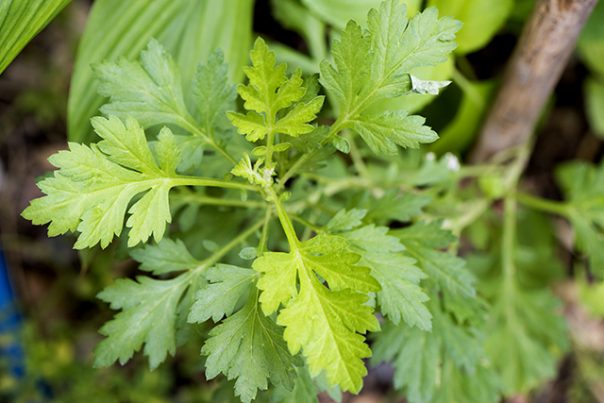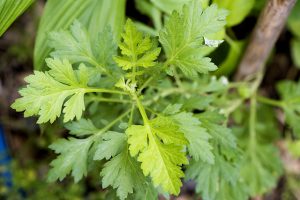
Artemisia Annua – sources, health benefits, nutrients, uses and constituents at NaturalPedia.com
Tuesday, August 29, 2017 by Frances Bloomfield
http://www.naturalpedia.com/artemisia-annua-sources-health-benefits-nutrients-uses-and-constituents-at-naturalpedia-com.html

Artemisia annua, also known as sweet annie or sweet wormwood, is a type of wormwood endemic to the temperate regions of Asia, particularly China. This annual, aromatic herb bears small yellow flowers and yellow-brownish, thin-skinned fruits.
For over a thousand years, Artemisia annua was used as an herbal remedy for fevers and digestive ailments. Nowadays, the most widespread use of this herb is as a treatment against malaria, specifically, as a derivative of the anti-malarial drug artemisinin. Though as a multi-purpose plant, there are many more applications for Artemisia annua.

List of known nutrients
The active compounds in Artemisia annua are:
- Arteannuin-B
- Artemetin
- Artemisinic Acid
- Artemisinin
- Deoxyartemisinin
- Friedelan-3 Beta-ol
- Quercetagetin
- Stigmasterol
The essential oil, meanwhile, is composed of:
- Artemisia Ketone
- Beta-caryophyllene
- Beta-selinene
- Camphor
- Germacrene D
- Trans-pinocarveol
As a result, Artemisia annua has a variety of medicinal properties which range from antibacterial and antioxidant to antispasmodic to antifungal.
Medicinal uses for Artemisia annua
Due to the numerous medicinal properties that are present in Artemisia annua, it’s believed to treat:
- Boils
- Colds
- Constipation
- Diarrhea
- Dysmenorrhea
- Fever
- Gallbladder Disorders
- Heatstroke
- Hemorrhoids
- Hepatitis B and C
- Herpes
- Indigestion
- Influenza
- Joint Pain
- Parasites
- Skin Infections
Artemisia annua can provide relief from constipation in two ways: first, it promotes peristaltic or muscular contraction action through its stimulant effects; secondly, Artemisia annua can induce purging, in turn increasing bile discharge and bringing about further peristaltic action. These allow stool to pass through the body with relatively little difficulty, especially if the condition is chronic constipation. The added effect of reduced risk of constipation is the prevention of hemorrhoids.
Because Artemisia annua possesses rather potent antibacterial and anthelmintic properties, it can provide protection from infection and parasites lingering inside the body, like ringworms or threadworms.
Artemisia annua can reduce the pain associated with dysmenorrhea by improving the flow of menstrual blood.
Body systems supported by Artemisia annua
Artemisia annua can benefit the liver and gallbladder by promoting bile discharge. Moreover, the increased bile flow can benefit the digestive system by assisting in the breakdown of food and elimination of excess acid from the stomach.
Ways to use Artemisia annua
One way to take Artemisia annua is via the extract or essential oil made from its dried and powdered leaves and stems. When applied to the skin, it’s best to dilute the extract with a carrier oil to make it less harsh.
Artemisia annua tea can be purchased from specialty shops and health food stores as loose tea or in pre-measured tea bags. The tea made from this herb can taste bitter, though honey and other natural sweeteners can mask this without a problem.
For topical applications, simply create a paste from Artemisia annua leaves and water then apply the paste onto the affected parts of the skin. This paste is believed to treat conditions like joint pains and skin infections.
Whether internally or topically, Artemisia annua should still be avoided by certain individuals due to potential detrimental health effects. Pregnant women, breastfeeding women, and people allergic to ragweed, marigolds, and all other related plants should keep their distance from Artemisia annua.
Where to learn more
Summary
Artemisia annua can be effective as a remedy against constipation, infections, parasites, and dysmenorrhea. It can support the health of the liver, gallbladder, and digestive system as well. However, it shouldn’t be taken by breastfeeding women, pregnant women, or individuals with ragweed allergies due to possible negative effects.
Sources include:
HealthBenefitsTimes.com
AyurTimes.com
HealthLine.com
MedicineNet.com
Tagged Under: Tags: Artemisia annua





